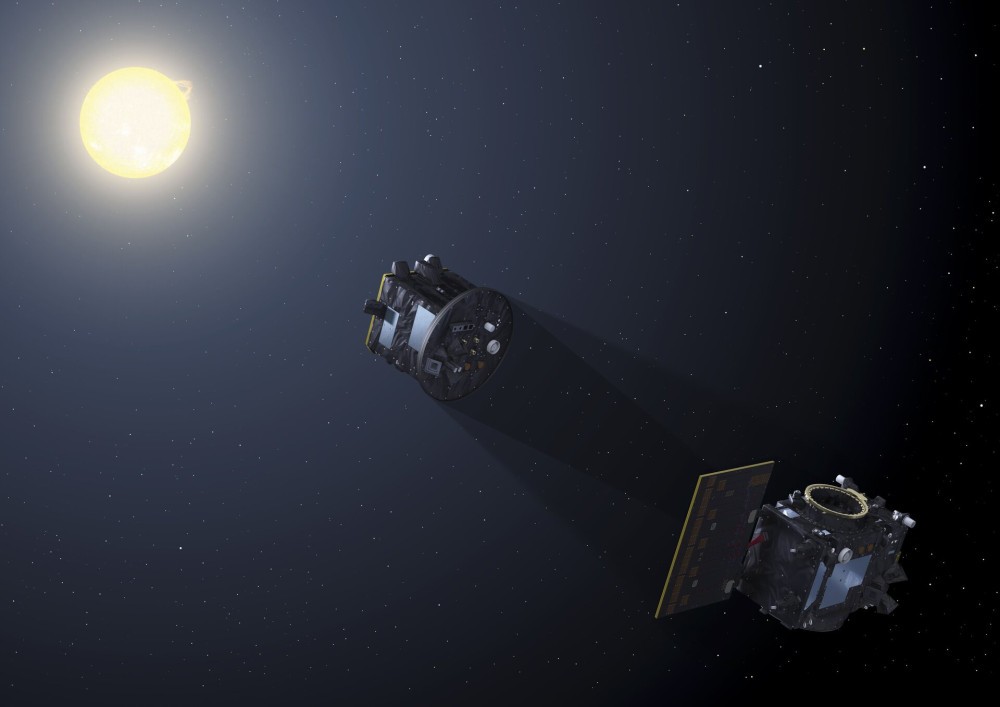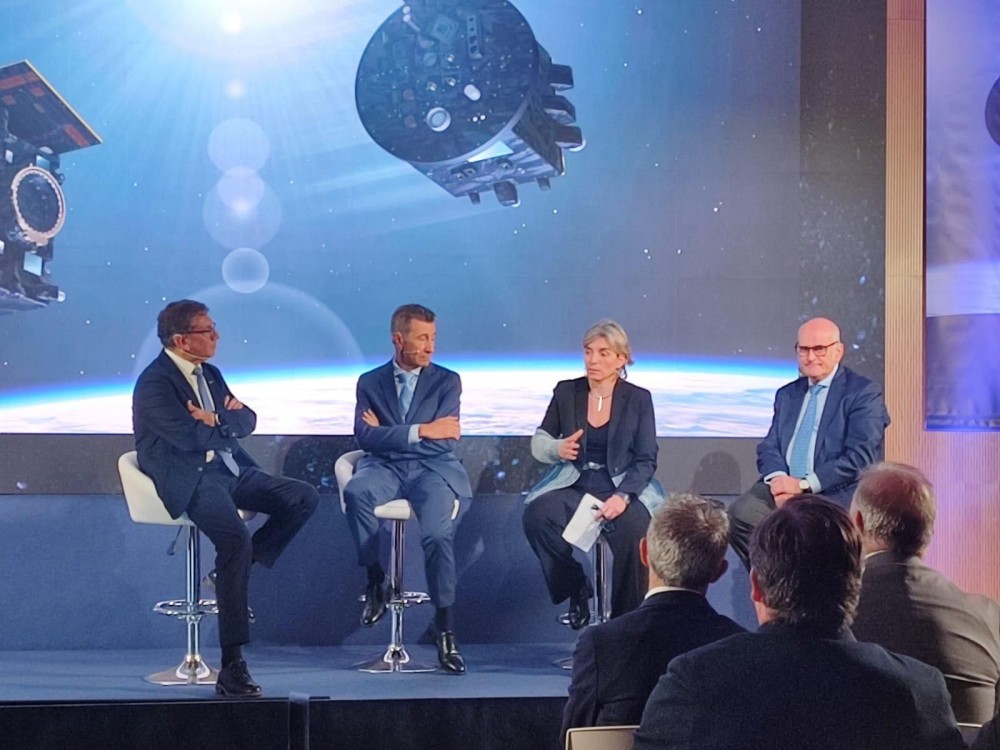GMV, a pioneer in ESA's Proba-3 mission

GMV, a pioneer in ESA's Proba-3 mission
The Proba-3 mission of the European Space Agency (ESA) is about to revolutionize space technology with its groundbreaking formation-flying and solar observation mission. GMV is playing a crucial role in this mission with a critical role in both the development of onboard systems and ground infrastructures.
Proba-3 is a mission led by Spain through Sener in close collaboration with a consortium of 40 companies from 16 countries. The mission comprises two satellites (Coronagraph and Occulter), which will fly at a distance of 150 meters, with the main aim of demonstrating the feasibility of advanced formation-flying technologies, which in this specific case means creating a virtual solid structure in space. In a simplified form, this means creating a virtual instrument with the scientific aim of making detailed observations of the solar corona by blocking the sun's light with one of the satellites, as if it were an eclipse, so that the other satellite can study the corona without interference.
GMV is responsible for the Formation Flying Subsystem (FFS), the most innovative component of the mission and one of the most complex and critical. This subsystem includes the design, implementation, and validation of the onboard software in a simulation environment that replicates the onboard computer and electrical interfaces. The FFS is the component that maintains the necessary precision and stability between the two satellites, allowing them to function as a virtual rigid structure with millimeter precision in position and arc-second precision in orientation.
GMV has also developed the ground system responsible for flight dynamics verification (Flight Dynamics System - FDS). This system is responsible for orbit determination, event prediction, and maneuver calculation, verifying that the satellites maintain formation throughout the mission. GMV will also provide support for the operations associated with this system during the initial phases of the mission, which will be the most critical, carrying out the in-flight certification of all the components including the FFS and the initial positioning of the formation flight configuration.
International collaboration is key to Proba-3. In the FFS GMV in Spain is working together with Sener, which is responsible for the formation control function, and with Canada's NGC Aerospace, responsible for the attitude and orbit control subsystem (AOCS). GMV in Poland is also playing a key role, designing, and validating the onboard function for calculating relative positioning based on GPS measurements.
To present the mission in Spain, on October 29 the Space Astronomy Center (ESAC) in Villanueva de la Cañada, Madrid, hosted an event attended by Diana Morant, Minister of Science, Innovation and Universities; Juan Carlos Cortés, Director of ESA; Carole Mundell, ESA's Director of Science and Director of ESAC; and Luis Manuel Partida, Mayor of Villanueva de la Cañada, among other authorities.
The event also featured an industry round table led by Diego Rodríguez, Sener's Director of Space and Science, with the participation of Mariella Graziano, GMV's Space Business Development Manager. During her talk, Mariella stressed that "Proba-3 opens up a new chapter in how to act in space. From now on FFS will make it possible to create large-scale virtual structures in space, including scientific instruments, earth observation instruments, and antennas. These operations can be performed autonomously, i.e. the satellites involved will be able to act independently, calculating their position and trajectory with respect to their counterpart, without the support of a human operator. But they will also be able to do so in a distribution manner, so that the various components of the formation will adapt to each other's behavior to ensure efficient and safe operation of the virtual instrument."
The mission will soon be launched from India and will achieve a historic milestone: it will demonstrate that high-precision formation flying between satellites in space is possible, while enabling important scientific work to be carried out by creating an artificial eclipse to study the solar corona.
